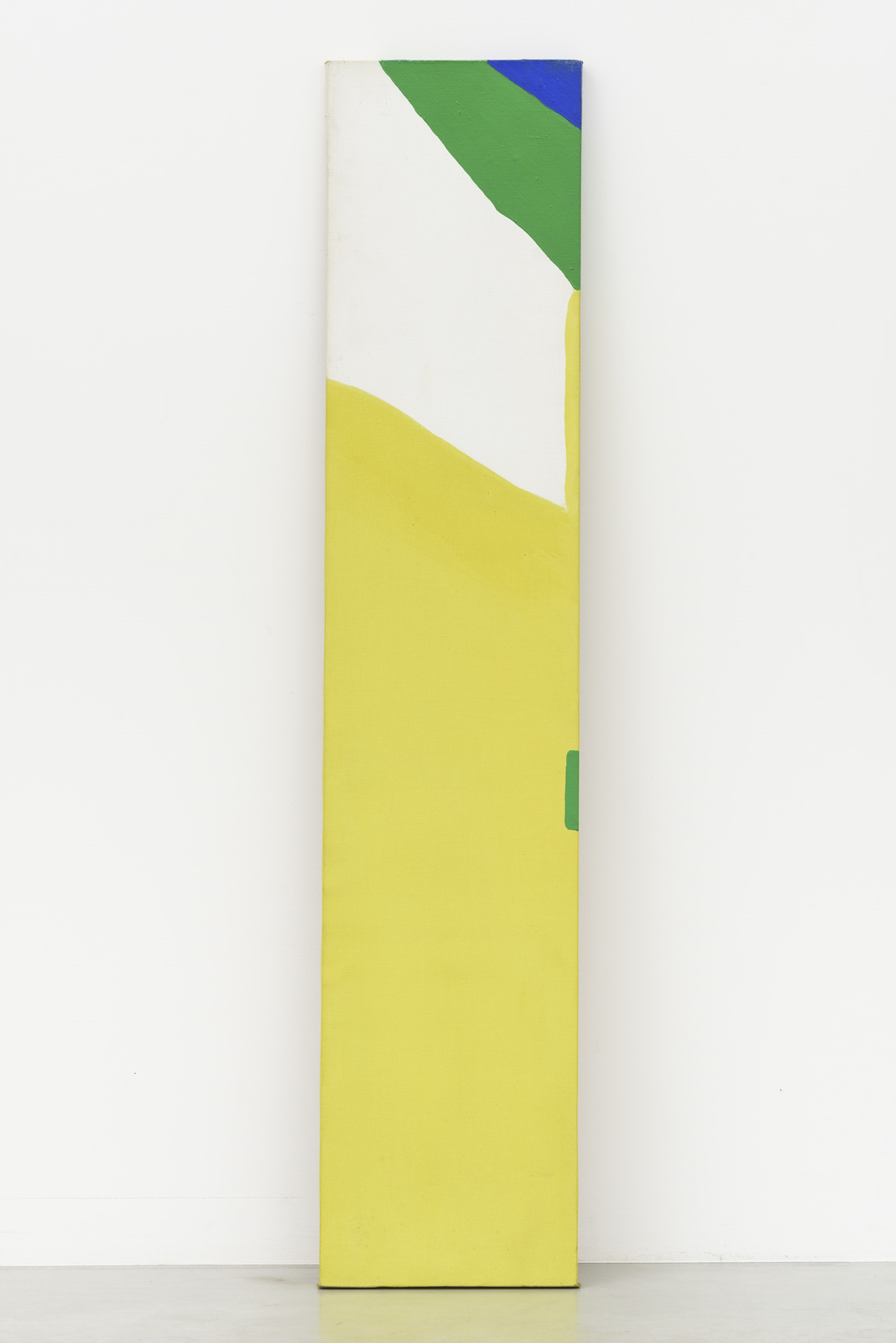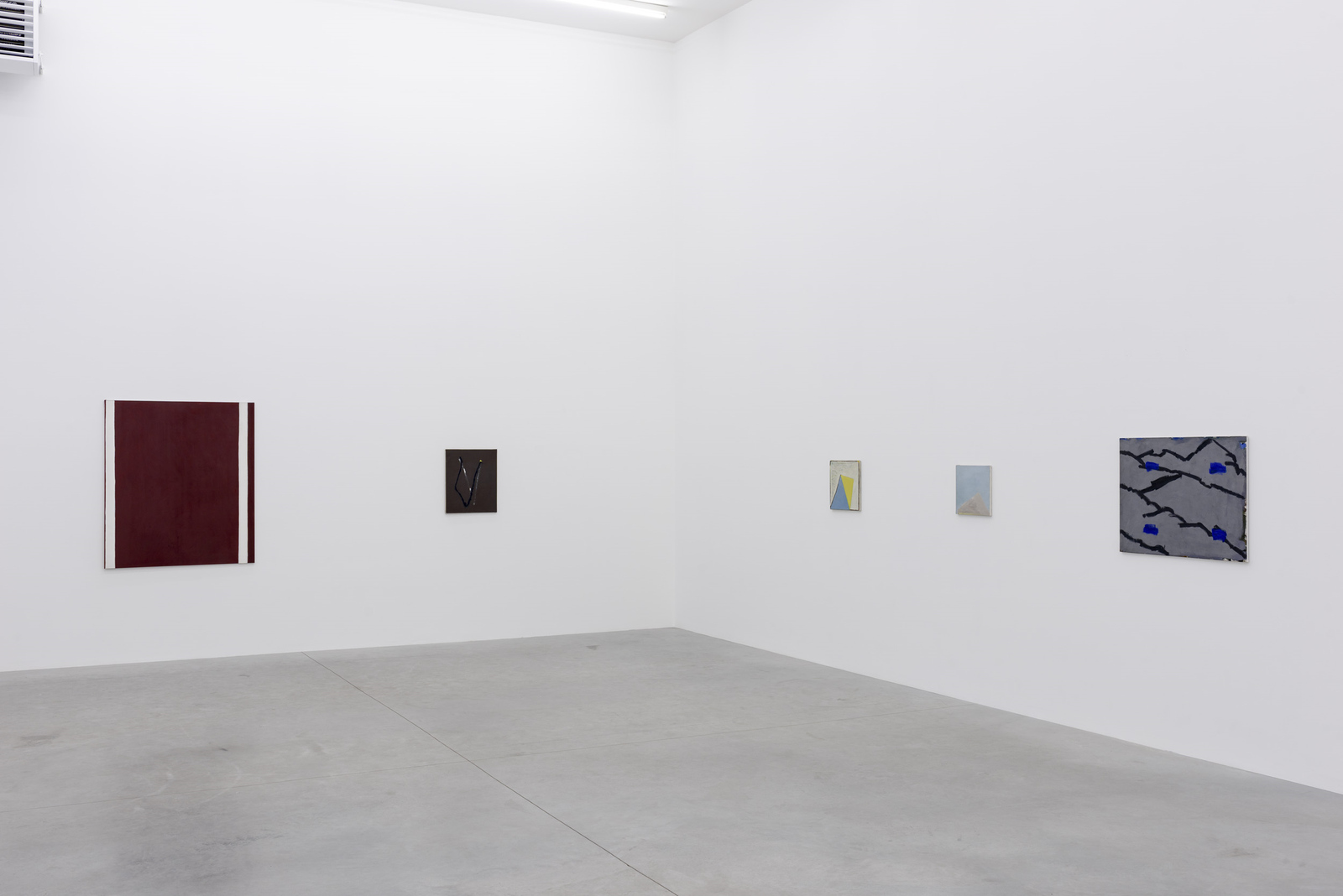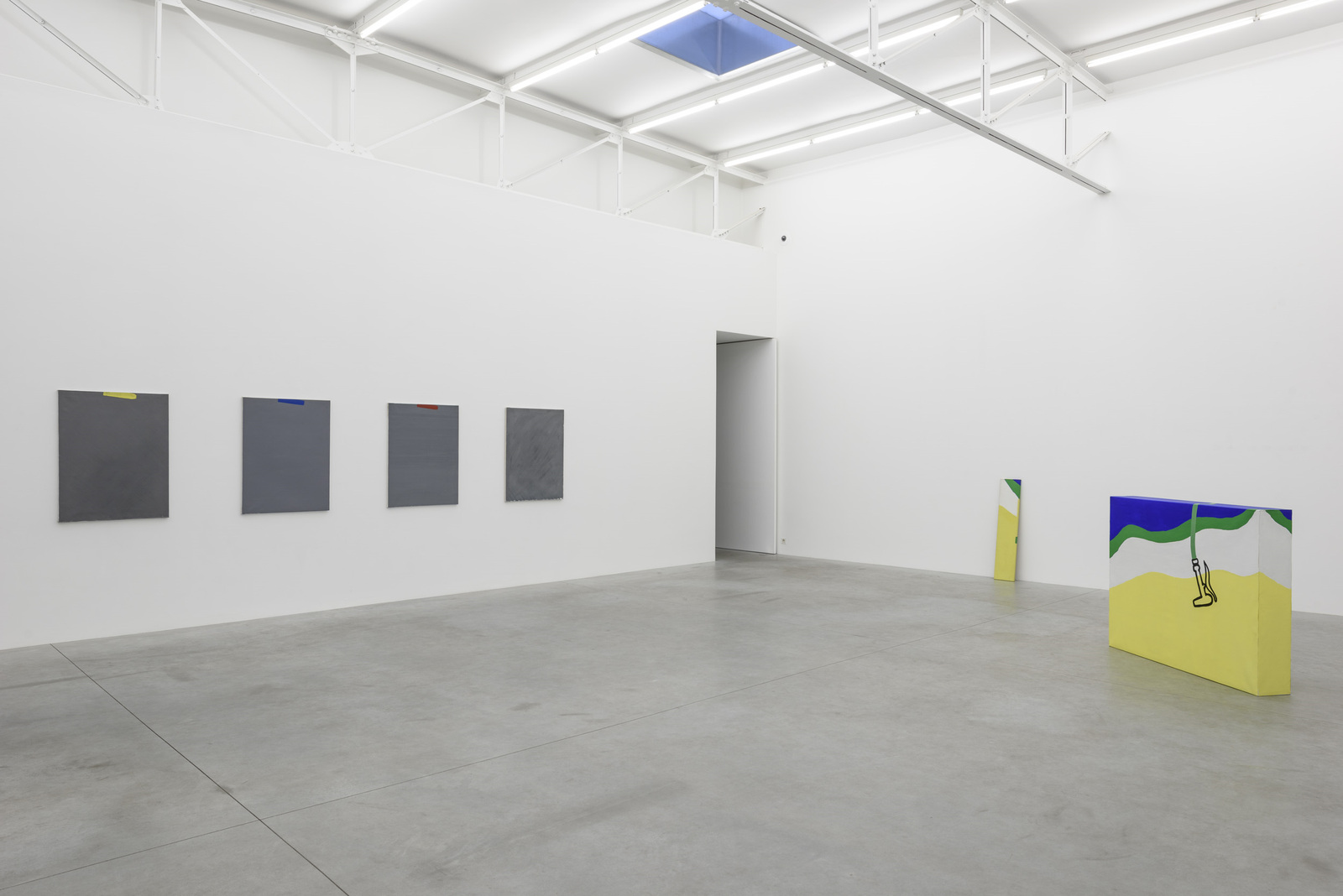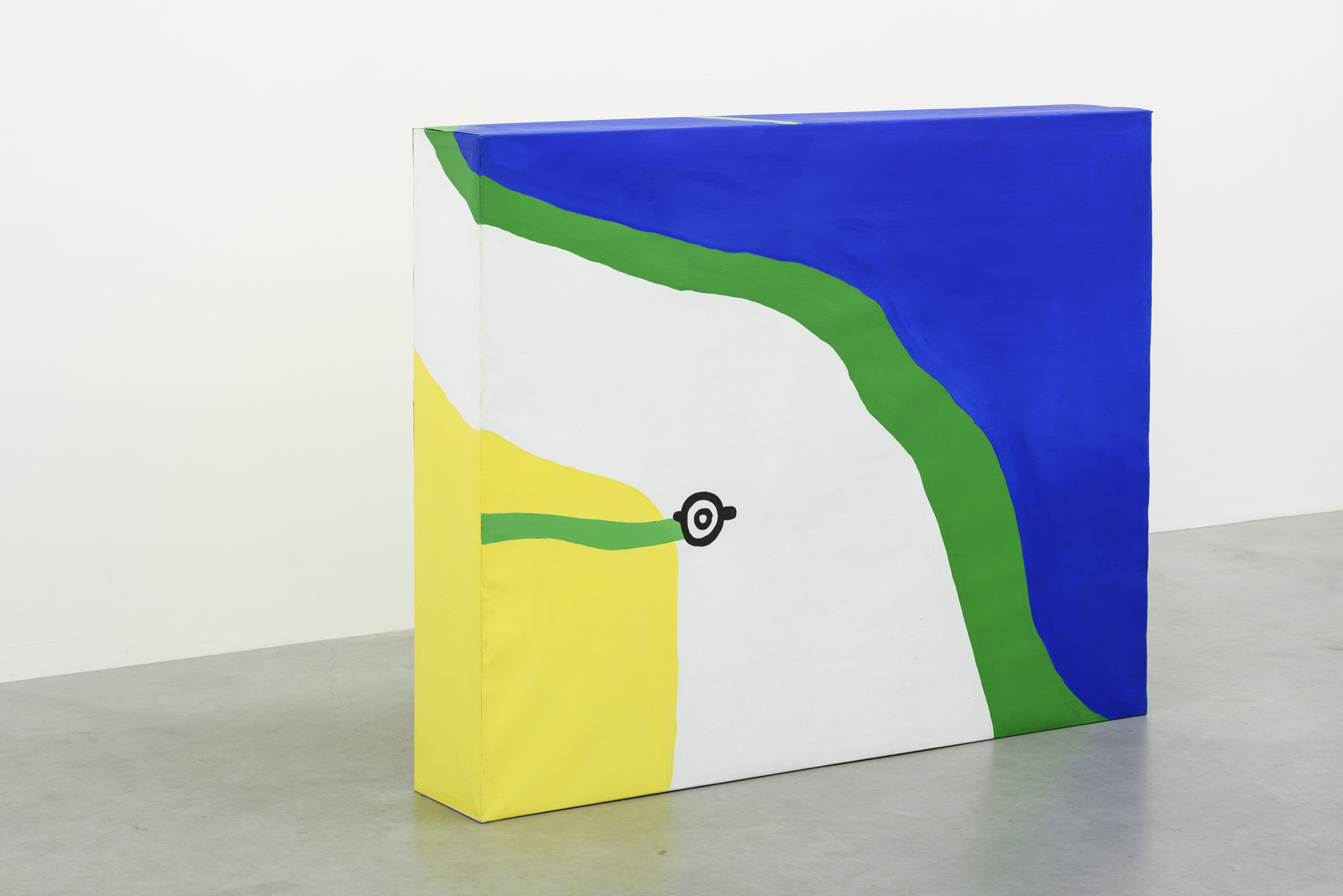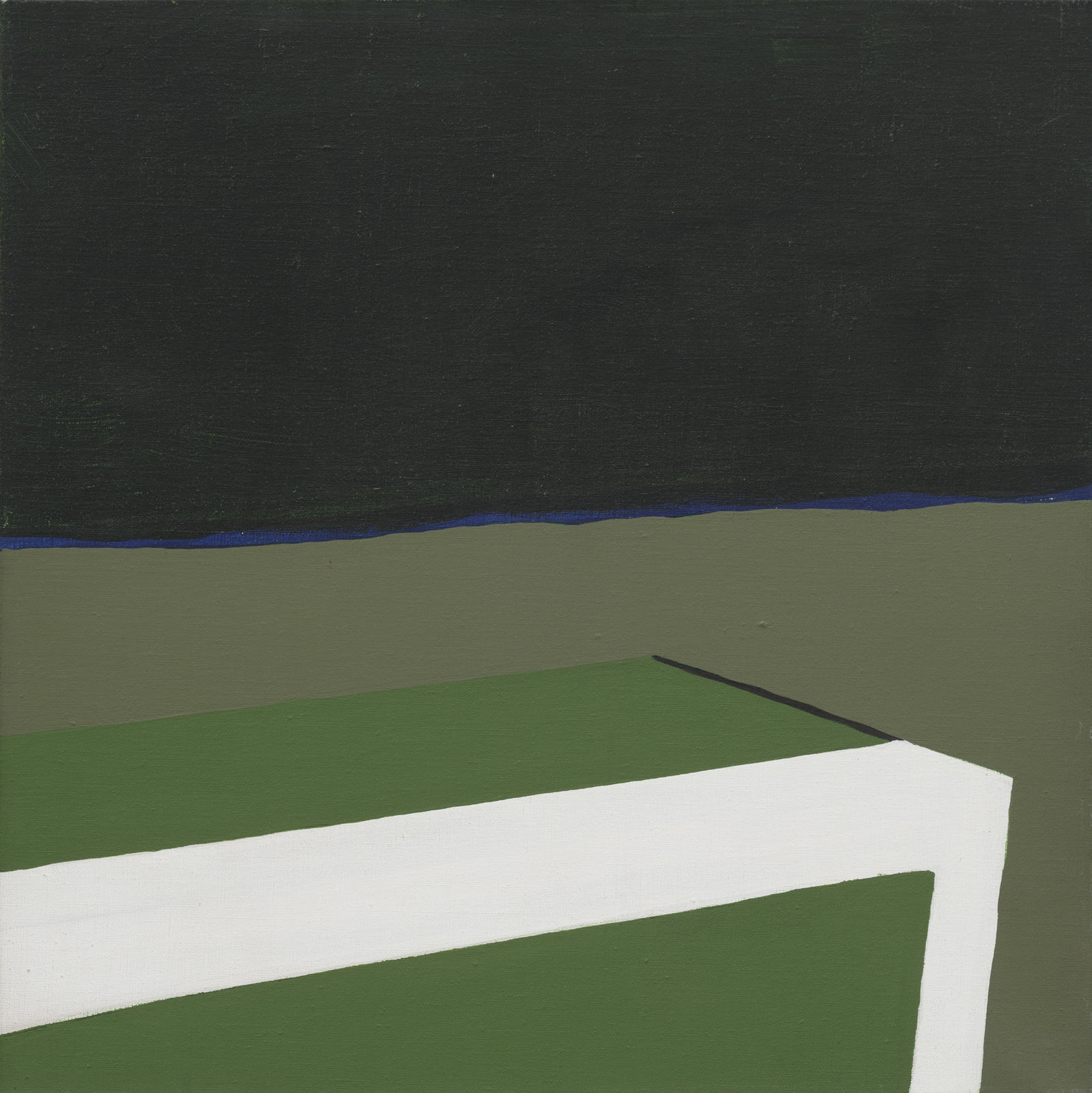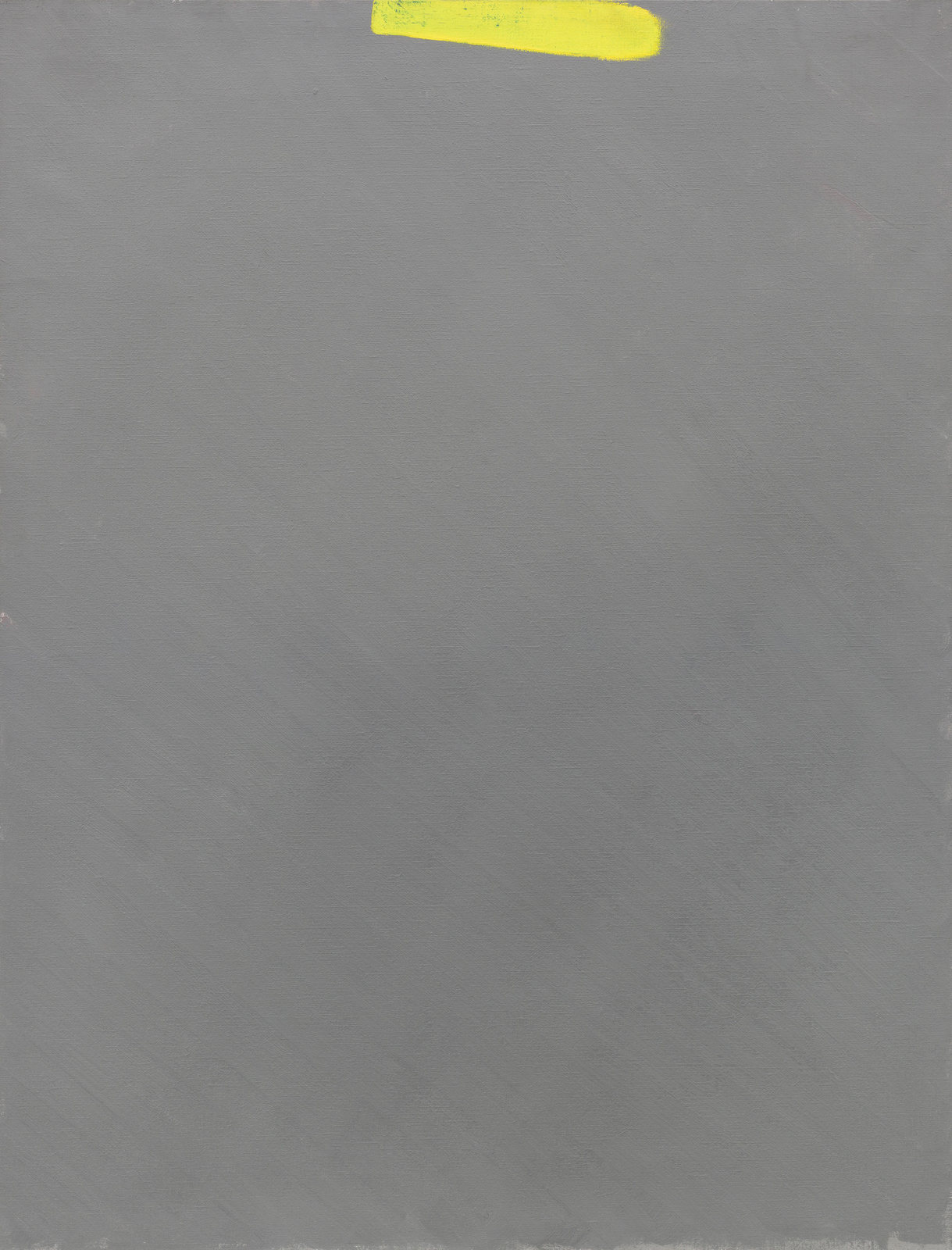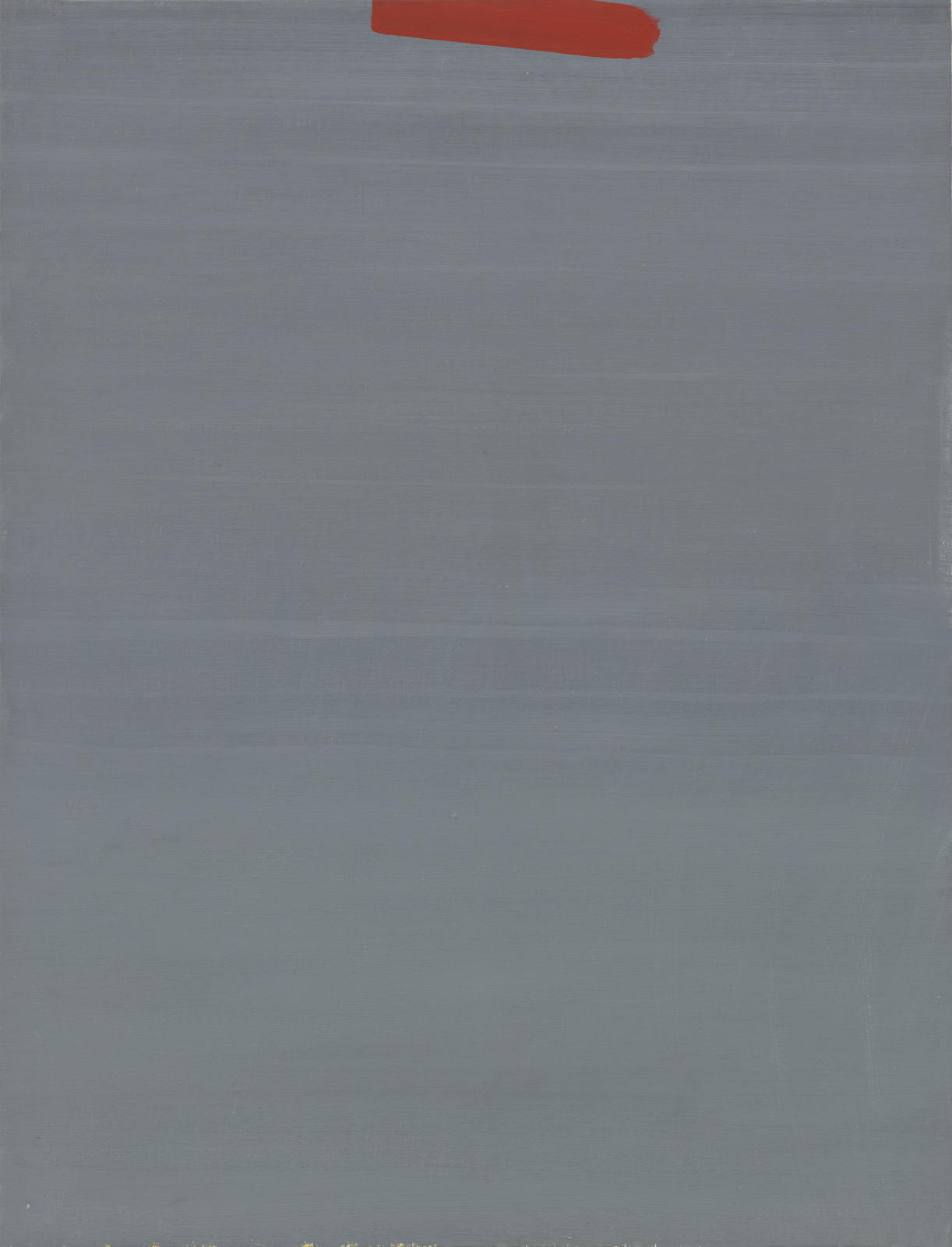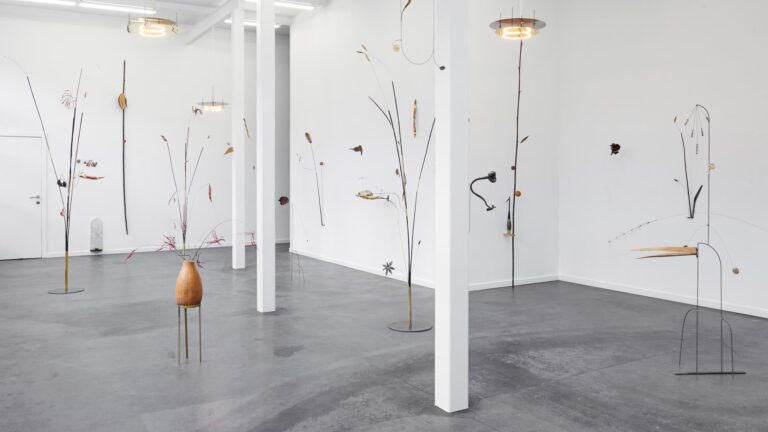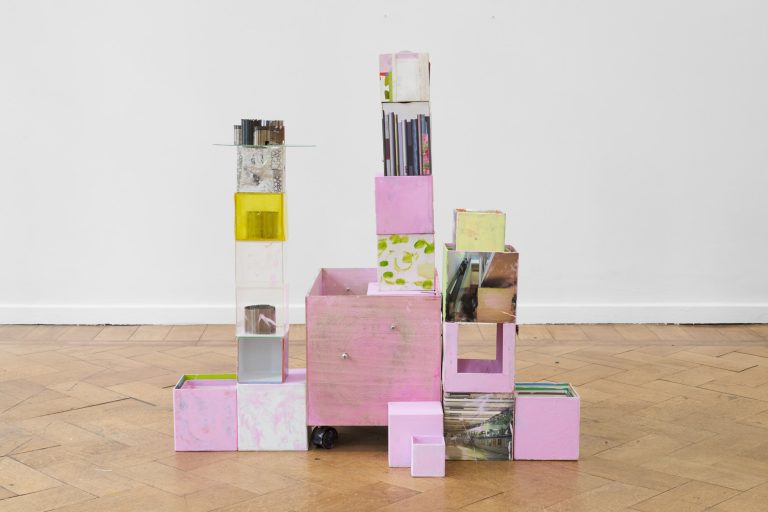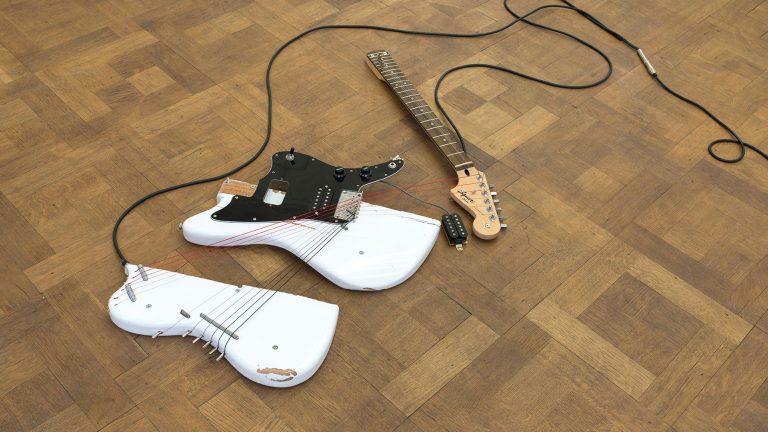Artist: Raoul De Keyser
Exhibition title: Tegendraads
Venue: Zeno X Gallery, Antwerp, Belgium
Date: January 18 – February 25, 2017
Photography: Peter Cox, all images copyright and courtesy of the artist and Zeno X Gallery, Antwerp
Raoul De Keyser was born in 1930 in Deinze, and lived there his entire life. From 1963-1964 he develops a personal oeuvre that unfolds through several stylistic periods. In this way, his early paintings from the sixties can be seen as exponents of the ‘Nieuwe Visie’ (New Vision), in which impressions of everyday surroundings are translated through a simplified figuration. Objects like a garden hose, soccer stocking or door handle appear repeatedly in the work and are used by De Keyser to conduct research on line, surface and color. In contrast to Pop Art, which will often thematize the American consumer culture, De Keyser consciously chose the more quiet and intimate imagery of the Flemish village – with or without the new signs of modernity. Raoul De Keyser, however, was not only influenced by figurative painting, but also by the American post-war abstraction such as Post-painterly abstraction, Color Field and Hard-edge painting. In this way, he quite literally refers to the American artist Al Held in the iconic work Baron in Al Held-Veld (Baron in Al Held Field) (1964-1966).
In the sixties, Raoul De Keyser already consciously engaged with the spatial implications of the painterly medium. There is a clear relationship to be noted between the disappearance and the flattening of space in the image plane and De Keyser’s growing interest in literally placing the work in the exhibition space. Between 1966 and 1971, he creates a variety of wooden frames onto which a canvas is stretched which is then painted on, called Linnen Dozen (Linen Boxes). The work Linnen Doos II (Linen Box II) (1966-1967), shown in this exhibition, has not been exhibited since 1970. The Linnen Dozen themselves are also regularly depicted in his works, as is the case in Untitled from 1971. The three-dimensional painting is also given form in the Slices: paintings that are set on the floor and lean against the wall, which can be seen as side-sections of the Linen Boxes.
In his works of the 1970s, he continues his research into the subjects and techniques of the previous decade, yet now in a more subtle and seemingly more systematic manner. He often works in series, such as for instance in works as Zeilen Heuvels (Sails Hills) or the quadriptych Tegendraads (Againstthe- grain) (1978). Increasingly, he takes the process of painting in itself as the subject in his oeuvre; the scratching in the paint, but also the space left for hesitations and ‘errors’ are common practices explored by De Keyser. The guiding principle here is a multi-usable motif: the research into both the pictorial space and the material and process-related conditions of painting.
The Keyser’s work of the 1980s is characterized by new subjetcs, greater spatial and painterly/ technical complexity and a more exuberant use of color. Tornado (1981), Knauw (Bite) (1983-1984) and Hellepoort 8 (Hell Gate 8) (1985) are clear examples of this development. The roughly brushed surface, however, has little to do with the ubiquitous (neo) Expressionism, but rather with his decade-long struggle with the paint and the canvas.
Zeno X Gallery has represented Raoul De Keyser since 1988. In the fall of 2018, there will be a traveling retrospective of his work which will open at the S.M.A.K. in Ghent. Previously, De Keyser has had solo exhibitions at the Inverleith House in Edinburgh, the Whitechapel Art Gallery in London, the Musée de Rochechouart, the Museu Serralves in Porto, the Kunstverein St. Gallen, the Kunstmuseum Bonn, and others. De Keyser also took part in Documenta IX, curated by Jan Hoet, and the Venice Biennale in 2007. In 2012, Zeno X Gallery organized a homage-exhibition to commemorate the life and work of Raoul De Keyser.
Raoul De Keyser, Linnen Doos II, 1966 – 1967, oil on canvas on wooden framework, 120 x 150 x 25 cm
Raoul De Keyser, Linnen Doos II, 1966 – 1967, oil on canvas on wooden framework, 120 x 150 x 25 cm
Raoul De Keyser, Slice I, 1967, oil on canvas, 120 x 25 x 2,5 cm
Raoul De Keyser, Baron in Al Held-veld, 1964-1966, oil on canvas, 105 x 80 cm
Raoul De Keyser, Crimson, 1971, acrylic on canvas, 30 x 40 cm
Raoul De Keyser, Untitled, 1971, acrylic and dispersion on canvas, 50 x 50 cm
Raoul De Keyser, Zürich, 1972-1974, acryl on canvas, 140 x 120 cm
Raoul De Keyser, Zeilen heuvels 4, 1979, oil on canvas, 35 x 35 cm
Raoul De Keyser, Zeilen heuvels 10, 1979, oil on canvas, 40 x 40 cm
Raoul De Keyser, Zeilen heuvels, 1979, oil on canvas, 70 x 90 cm
Raoul De Keyser, Gekruiste Krijtlijn en Spie, 1980, acrylic on canvas, 150 x 200 cm
Raoul De Keyser, Tornado, 1981, oil on canvas, 36 x 36 cm
Raoul De Keyser, Knauw, 1983-1984, oil on canvas, 90 x 70 cm
Raoul De Keyser, Hellepoort 8, 1985, oil on canvas, 50 x 40 cm
Raoul De Keyser, Zes voor P (6), 1986, oil on canvas, 60 x 50 cm
Raoul De Keyser, Z.T., 1972 – 1973, acrylic on canvas, 40 x 30 cm
Raoul De Keyser, Z.T., 1973, acrylic on canvas, 40 x 30 cm
Raoul De Keyser, Tegendraads, 1978, oil on canvas, 4 x (105 x 80 cm)
Raoul De Keyser, Tegendraads, 1978, oil on canvas, 4 x (105 x 80 cm)
Raoul De Keyser, Tegendraads, 1978, oil on canvas, 4 x (105 x 80 cm)
Raoul De Keyser, Tegendraads, 1978, oil on canvas, 4 x (105 x 80 cm)
Raoul De Keyser, Tegendraads, 1978, oil on canvas, 4 x (105 x 80 cm)

